Wildlife To native birds’ benefit, conservationists declare South Georgia clear of invasive rodents for first time in more than 200 years.
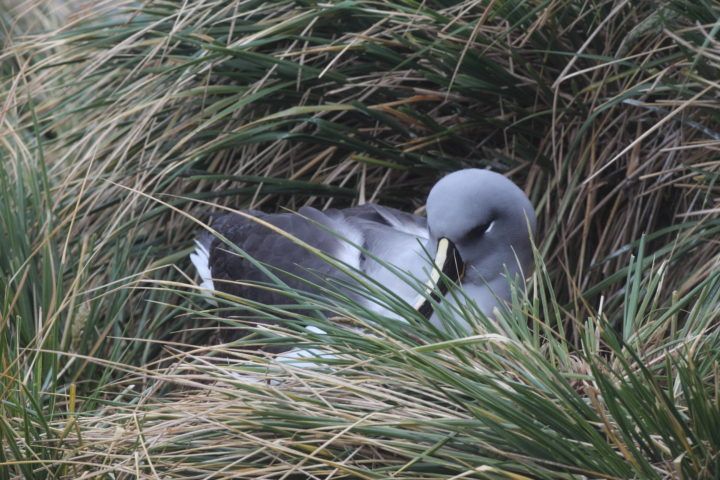
South Georgia. Photo: Carl Safina
Celebrated sea captain James Cook implanted a British flag down into the rocky, icy ground on the shore of South Georgia in 1775. When he did so, he claimed ownership of the icy, mountainous Antarctic island not only for his country’s humans, but, inadvertently, also for its rodents. From the arrival of Cook onward, ships carrying explorers, scientists, whalers, fishers and seal hunters continued to fuel the island’s exploding population of rats and mice. The rodents quickly adapted to the cold and icy conditions of their unforgiving new home—subsisting off local animals, particularly seabird chicks, which—like most remote island animals—never evolved defenses against such ruthless predation.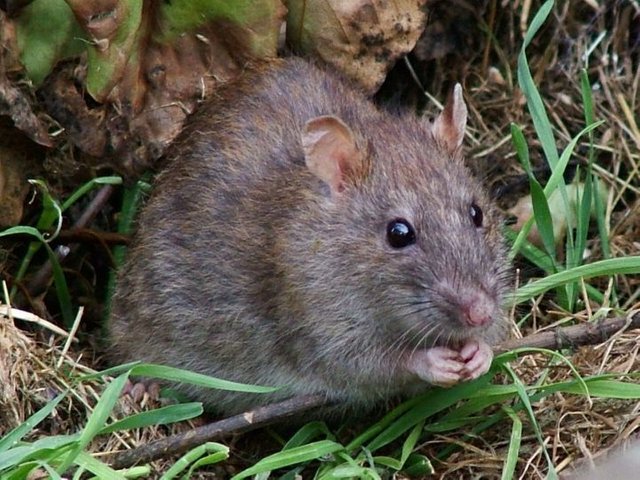
Wild rat. Photo: Reg Mckenna/Wikimedia commons
After more than 200 years after they first colonized South Georgia, by the early 2000s, rats and mice had munched many native species to the very edge of existence, including the South Georgia pipit, a tiny songbird, and South Georgia pintail, a duck—two birds found nowhere else in the world. But after seven years of eradication work, launched in 2011, conservation group South Georgia Heritage Trust has just announced it has completely rid the island of rodents. This, the Trust says, will provide a safer future for South Georgia’s native wildlife—especially its vulnerable native birds. South Georgia is home to the largest and second-largest king penguin colonies in the world, as well as countless other bird species, including albatross, shearwaters, petrels, cormorants, skuas and more.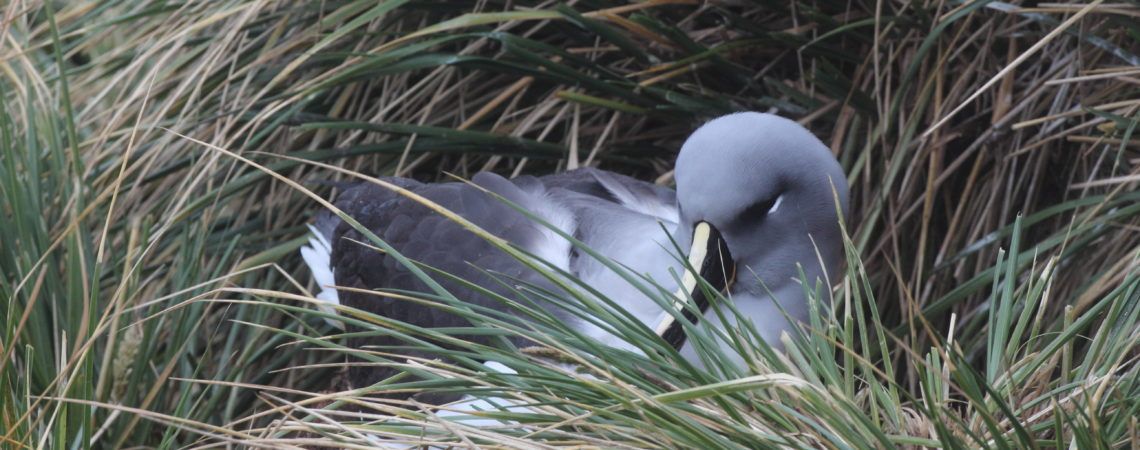
Gray-headed albatross in ground nest in South Georgia. Photo: Patricia Paladines
“Thanks to the outstanding work of the passionate and committed members of Team Rat and the Board of Trustees, the birds of South Georgia are free from the threat of rodents,” said Mike Richardson, chairman of the South Georgia Heritage Trust said in his announcement. “The Trust can now turn its attention and efforts to working with the Government of South Georgia & the South Sandwich Islands on conservation of a different kind: the conservation and reinterpretation of the island’s historic cultural heritage to educate and enlighten future generations about our environment.”
South Georgia Heritage Trust rolled out its rodent eradication work over four phases, from 2011 to present. For three field seasons, “Team Rat”—a group of pilots, engineers, chefs, doctors and field staff—was deployed to South Georgia. The field team prepared hundreds of tons of poisoned bait that was dropped from several helicopters cruising over the island. The hope was that the rodents would take the bait and then retreat to their underground burrows to die, out of reach of scavenging animals, like gulls, that could potentially be poisoned by eating dead rats and mice.
In 2017, two years after it dropped its final round of poison, South Georgia Heritage Trust rolled out the final phase of its project: checking the island for signs of rodents. Field staff placed thousands of wooden stakes into the ground, and tied to them wax tags and plastic cards dipped in vegetable oil or peanut butter—attractive snacks for gnawing rats—to check for signs of rodents. Two canine handlers lead three rodent-detection dogs across South Georgia. By the end of 2017, the devices and dogs exposed no signs of rats.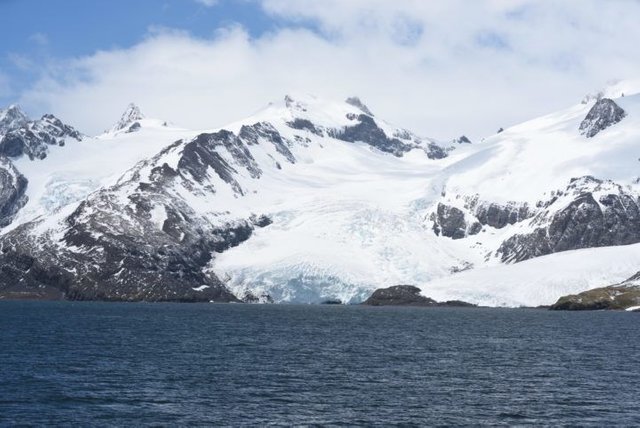
King Hakkon Bay, South Georgia. Photo: Carl Safina
The presence of invasive rodents on remote islands is extremely dangerous to native species. I have seen the incredible devastation rats can cause to seabird colonies on islands in the Atlantic, on Midway Atoll, in New Zealand’s sub-Antarctic, and in South Georgia.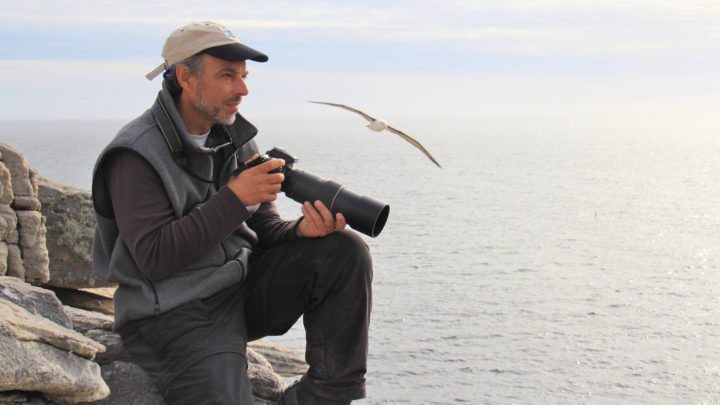
In South Georgia, with black-browed albatross.
Photo: Patricia Paladines
But I have also witnessed the benefits of eradication, the more-incredible resurgence of birds and vegetation when rats are vanquished from the same oceanic islands, including the outer islands of South Georgia; those smaller islands had already been made rat-free by the last time I visited a little over a year ago. Rats have probably driven more island-bird extinctions than any other human-introduced species. South Georgia’s pipit has now been saved from likely extinction and there will probably be hundreds of thousands, perhaps millions, more seabirds nesting there in coming years.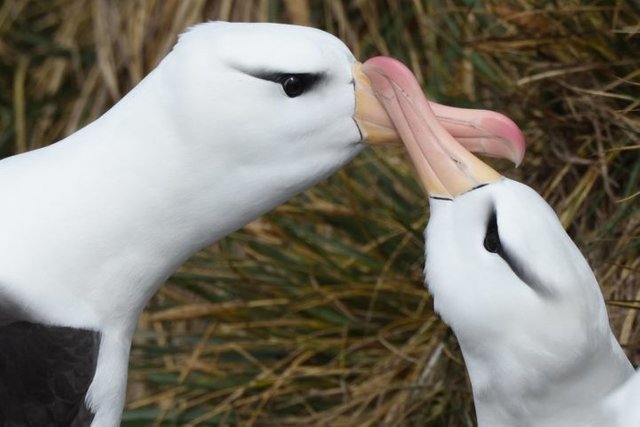
Black-browed albatrosses in South Georgia. Photo: Carl Safina
Ecologist Carl Safina is author of seven books, including the best-selling “Beyond Words; What Animals Think and Feel,” and “Song for the Blue Ocean,” which was a New York Times Notable Book of the Year. His writing has won a MacArthur “genius” prize; Pew and Guggenheim Fellowships; book awards from Lannan, Orion, and the National Academies; and the John Burroughs, James Beard, and George Rabb medals. His work has been featured in The New York Times, The Los Angeles Times, The Washington Post, National Geographic, CNN.com and elsewhere, and he hosted the 10-part “Saving the Ocean” on PBS. Safina is founding president of The Safina Center at Stony Brook University.